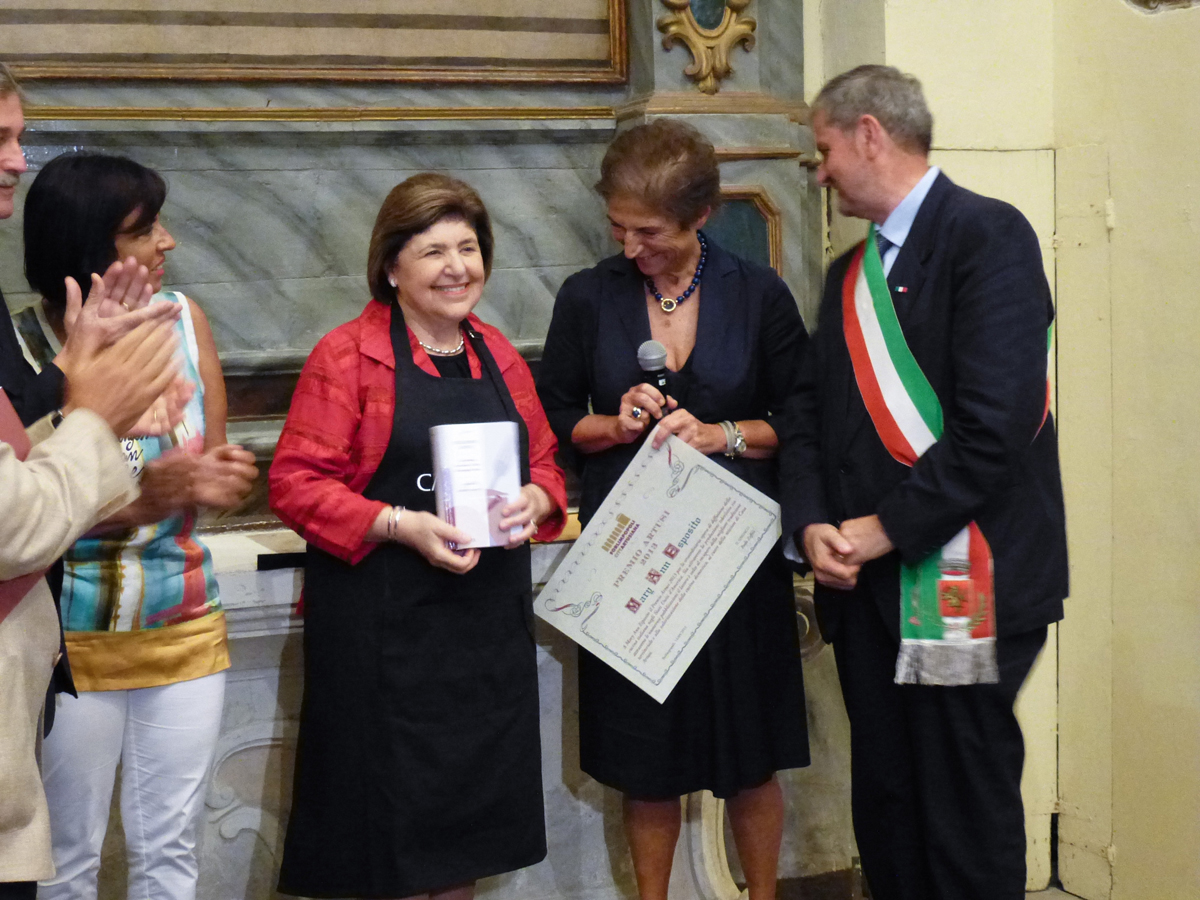For Mary Ann Esposito, life has always focused on food. The eldest daughter of an Italian American family, Esposito grew up in Western New York learning the rich tradition and skills of cooking authentic southern Italian cuisine. Her mother and Neapolitan grandmother ran a boarding house where the family also lived, and the kitchen seemed to remain at the center of all aspects of their bustling life, business and family alike. And whether she knew it or not at the time, Esposito’s life was heading down a path steeped in her heritage.
“Subconsciously, these women really influenced me with their dedication to the family,” she says. “That’s the key thing about Italians in general. The family is the glue that holds everything together, and a big part of that glue is the food.” If there was a wedding, food was the natural way to celebrate. If someone passed, food helped them to mourn.
If there was a birthday, a holiday, a get together of any kind, it was food that made them more than gatherings. And even on vacations, the preparation of food seemed to slip its way into their days.
“We went to a cabin, and my mother sat outside on a lawn chair. She sees an apple, and that did it; we were making applesauce,” Esposito recalls. “My mother would get onto a plane and have dozens of eggs with her, and she’d start handing them out to the flight attendants. This is how we lived.”
Esposito pursued another career first. She became a teacher. But things changed in 1980 when she took her first trip to Italy with her husband. “I went to a cooking school in Sorento, and I was totally bored because the professor who was half Swiss and half Italian was making dishes that I already knew how to make. I wanted a challenge; I wanted something different,” she says. “But it made me realize, wow, my mother and grandmother had given me such a wealth of information and tradition. I’ve got to start appreciating this more.” And so she did. “I decided to give full attention to my Italian heritage.”
She grew to love the art, and by the end of the decade, she would begin hosting what is now the longest running cooking show in the country, Ciao Italia, which airs on PBS. “It feels good that we’ve been able to teach and entertain people and have them understand what the regionalization of food is all about.”
Esposito grew to love Italy more and more, and as her love grew so too did her commitment to traveling there to take it all in. “Italians use food to feed themselves but to also describe their feelings, their traditions.” She’s visited more than 30 times, and each time, she’s kept a journal to log her adventures, the people she met, the dishes she ate, the traditions she learned or participated in.
And those journals? They became the foundation for each one of the 13 books she would eventually write.
Her most recent, Ciao Italia: My Lifelong Food Adventures in Italy, is a capstone of Esposito’s career. “I included very regional recipes, but gave you a tour of Italy as well,” she says. “I filled it with over 150 regional recipes that tell you why this recipe is called this, what the folklore is, and the scenes you see. It encapsulates 30 years of going back and forth to Italy, from the top of the boot to the bottom.”
This book seems different than her others. It is a travel log of sorts, one where you’re transported to Italy in some way through each recipe and section and at the end somehow end up back in your kitchen with an authentic meal on your counter. “You can never duplicate the taste, but you can come very close by following the techniques that Italians use to create a dish,” Esposito explains. “Not everybody can stand in a kitchen all day long to make food. We’re a mobile society, so I thought about how I could take a recipe and streamline it for the American home.”
Each section of the book offers a glimpse into life in Italy. It helps readers understand why certain types of dishes are important to the culture there. As Esposito explains, “Given that Italy is surrounded by water on three sides, it is easy to understand why seafood is a big part of the diet.” Make sure to try Mary Ann’s Insalata di Mare, a pure example of this philosophy.
The recipes that follow are simple, easily digestible in both format and language. Readers are treated to short factoids about a key ingredient in the recipe or a story from one of Esposito’s many adventures. And beneath all of that, evident in her writing and understanding, is a sincere appreciation for the traditions instilled in her by her family.
“I’ve been writing this book since I was a child,” she says. “I just didn’t know it.”
 Insalata di Mare (Seafood Salad)
Insalata di Mare (Seafood Salad)
This rich and succulent seafood medley is best when allowed to marinate for several hours or overnight.
The presentation is nice, too.
Serves 8
Ingredients
• 3 lemons, 1 cut into ¼-inch slices and 2 juiced
• Coarse sea salt to taste
• 1 pound large dry sea scallops, cut in half crosswise
• 1½ pounds large shrimp (21–25 count), unpeeled
• 1 pound squid rings
• ⅔ cup extra-virgin olive oil
• 1 teaspoon coarse sea salt
• ¼ teaspoon celery salt
• 8 ounces lump crabmeat
• Coarse colored Margarita salt (optional)
• ½ cup minced fresh mint
• 2 large blood oranges or navel oranges, 1 juiced and 1 cut into 8 wedges
Directions
• Fill a medium saucepan with water; add the lemon slices and a pinch of salt and bring to a boil. Lower the heat to a simmer, add the scallops, and gently cook them for about 3 minutes, or just until they look opaque. Remove the scallops with a slotted spoon to a large bowl, keeping them in a pile. Set aside.
• Add the shrimp to the saucepan and cook them for about 2 minutes, just until the shells turn pink; remove the shrimp with a slotted spoon. Cool, peel, and devein the shrimp. Place them in the bowl with the scallops.
• Add the squid rings to the saucepan and simmer them for about 20 minutes, or until they are tender. Cooking them too fast over high heat will make them tough. Remove the squid rings with a slotted spoon and add them to the bowl.
• Pour the olive oil into a 9 x 12-inch glass casserole dish. Stir in the lemon juice, celery salt, and 1 teaspoon salt. Mix well. Add the scallops, shrimp, squid, and crabmeat to the olive oil mixture. Stir to combine well. Cover the dish with plastic wrap and refrigerate it for at least 3 hours or overnight.
• When ready to serve, have 8 martini glasses or small ice cream sundae dishes ready. Wet the rims of each glass and dip the rims in Margarita salt, if desired.
• Stir the mint into the seafood mixture and spoon it into the individual glasses.
• Pour a little of the fresh orange juice over each dish. Make a small knife slit in the center of each orange wedge and anchor one over the rim of each glass. Serve.





